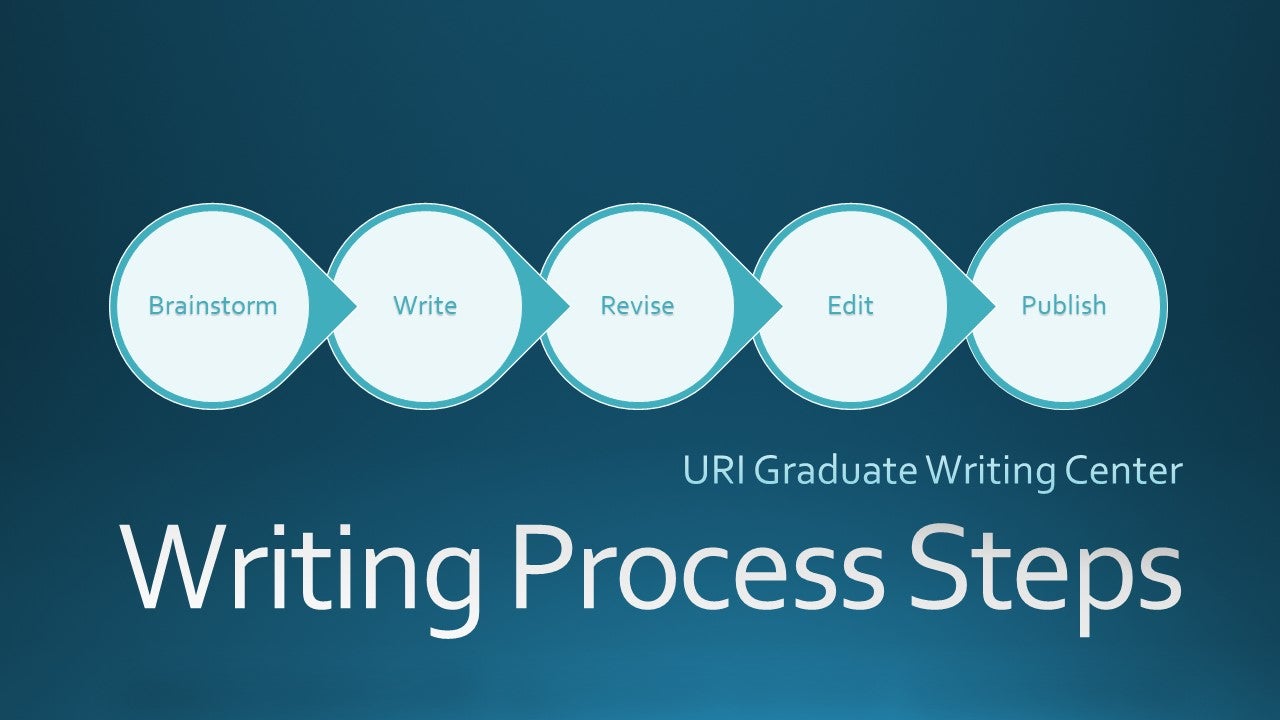Everyone has their own routine for their writing process. The important idea is to find a process that works for you! Here are five recommended steps to include in developing your own writing process and writing style: brainstorm, write, revise, edit, and publish.
1. Brainstorm. This step can also be referred to as “prewriting.” During this stage, you formulate ideas, plans ways to support those ideas, and think about the best ways to structure and organize your paper.
A concept called “free writing” can be a helpful tool when brainstorming. During free writing, write down every idea that comes to mind—no editing! No matter how disjointed those ideas might seem at first, putting them down in words is an important part of brainstorming. Free writing allows you to visually identify your ideas and begin to select the best topics for your paper.
Outlining your paper is a great brainstorming technique as well. One way to outline your writing is to make a bullet-point list of the main ideas and supporting ideas for each section of the assignment. Make sure to use your assignment instructions to stay on-task with the content in your writing and planning.
2. Write. After you’ve brainstormed, the next step is to write! For your first draft, don’t be concerned about editing and revising. Use this opportunity to get all your thoughts on paper and worry about editing later.
Try to make writing a part of your daily routine. Setting small goals and planning out your writing tasks can help make your writing process more successful. Even setting aside 30 minutes a day to write could make the overall writing process less overwhelming. Hold yourself accountable by talking about your writing goals with others such as peers, colleagues, and Graduate Writing Center tutors.
Sometimes, you won’t fully know what you’re writing about until you are actively writing. Remember that writing is an iterative process. Use the brainstorming tools of free writing when you get stuck and use your outline to stay organized.
3. Revise. Completing a writing project usually involves multiple kinds of revising. One of the most important things to remember when revising is considering your reader’s experience. Peer-editing is strongly recommended. Have other students, friends, or family read over your manuscript. This is a great way to make sure your paper is comprehensible to an outside audience. Make an appointment at the GWC for personalized help with revising!
For an example, LifePublishing describes the A.R.R.R. approach:
Add. Check to see if all your points are explained well. Identify the areas of your paper that may need more supporting detail. What does the reader need to know to understand your ideas or arguments?
Rearrange. Does your paper flow well? Consider where you may need to restructure your paper and where ideas may fit better. What is the best order for your reader to understand the information?
Remove. Are you giving too much detail or supplying too much information? Are you being repetitive? Remove extraneous words or sentences. Your reader will thank you for giving them clear, concise ideas and explanations.
Replace. You might also think of this “R” as “Rewrite.” After reviewing your paper, you may realize that some areas may not help to support your argument and need to be rewritten. Don’t be afraid to make big changes! As the writer, you are in charge, and you can experiment and play with different ways to express your ideas in words.
Remember to get help from peers including GWC tutors when revising and make multiple drafts as needed!
4. Edit. This is the time to refine your writing and to check your paper for clarity and mechanical errors. Make sure all of your citations are properly included and formatted in the correct style. Read your paper out loud to help slow down and notice small grammatical and spelling errors that editing software might not catch. You may want to read and reread multiple times to make sure your writing is fully complete and representative of your best work.
5. Publish. You’ve fine-tuned and edited your writing, and now it’s time to publish it. Publishing can be in the form of submitting an assignment to a professor or to a professional journal. Publishing is a way to have your hard work recognized. Publish with pride knowing you’ve successfully navigated the writing process!
*This post was adapted from LifeRich Publishing “The 5-Step Writing Process: From Brainstorming to Publishing.” Blog post written by Danielle Perry & Carolyn Decker.

